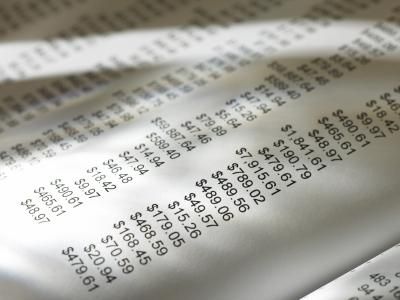A difficult concept in chemistry is the equilibrium of chemical equations. Chemical reactions do not always react to completion, and they can proceed in either direction if it is written with a double sided arrow. The reaction in the forward direction (looking from left to right in the equation) does not always proceed at the same rate as the reverse reaction (from right to left). A chemical reaction is said to be in dynamic equilibrium if the forwards and backwards reaction proceed at the same rate. This means that the products and reactants on either side are being consumed and created at the same rate, so it seems as if their presence is approximately constant.
The equilibrium of a reaction will shift if the conditions of the system are changed. It will move in the direction that favours the side that will counteract the change that has been made.
Pressure/Volume
If the pressure of the system is increased, the equilibrium will shift in the direction that lowers the pressure back down, whereas if the pressure is decreased, the equilibrium will shift to increase the pressure.
For example if the system is shifting to decrease the pressure, it will move to favour the side of the reaction that has the fewest number of moles, which decreases pressure. (Remember the particle theory of matter – more moles means more particles and more a higher pressure. Less moles means less particles and a lower pressure.) Pressure and volume are often related in that when the volume of a system is changed, the result is a change in pressure.
Ie. If the Pressure goes UP, the equilibrium will shift to DECREASE the pressure by favoring the side of the reaction that has LESS moles.
If the Pressure goes DOWN, the equilibrium will shift to INCREASE the pressure by favoring the side of the reaction that has MORE moles.
Consider the following reaction:
2O3(g) ⇋ 3O2(g)
If the reaction vessel increases in volume, then the pressure will decrease, as there is now more space for the particles to move around in. If the reaction vessel increases in volume, therefore decreasing the pressure, then the equilibrium will shift in the direction of the equation that has more moles. For the reaction above, it will shift to the right as there are more moles of O2 (there are 3) than O3 (there are 2). This means that the forward reaction is favored.
If the reaction vessel decreases in volume, then the pressure will increase, causing a shift to the left, since the left has fewer moles (2) than the right side (3), therefore shifting to the left will decrease the total number of molecules and decrease the pressure
If you’re having trouble recognizing how the pressure would change, remember that pressure is equal to the force divided by the area the force is applied over. (ie. P=F/A). When we increase the area by increasing the size of the reaction vessel, the force is still the same and the pressure decreases. When we decrease the size of the reaction vessel, the force is still the same but the area is decreased and therefore the pressure is increased.
Temperature
To determine which direction a reaction will shift, you need to know if it is endothermic or exothermic. One direction will be endothermic, and the other will be exothermic. If the temperature of the system is increased, the system will want to decrease the temperature, so it will shift in the direction of the endothermic reaction, because it absorbs heat as energy. If the temperature is decreased, it will shift in the direction of the exothermic reaction, because it will release heat, increasing the temperature.
Concentration
If an amount of reactant/product is added, the equilibrium will shift to favour the consumption of the compound. For example, consider the following reaction:
2SO2(g)+O2(g)⇋2SO3(g)
If you were to increase the concentration of SO2, the equilibrium would shift to the right (favouring the forwards reaction) to decrease the concentration of reactants (since we added some). If you were to remove some SO2, decreasing its concentration, the equilibrium would shift to the left, favouring the reverse reaction in order to increase the concentration of SO2.
SchoolTutoring Academy is the premier educational services company for K-12 and college students. We offer tutoring programs for students in K-12, AP classes, and college. To learn more about how we help parents and students in Edmunston, New Brunswick visit: Tutoring in Edmunston, New Brunswick.




